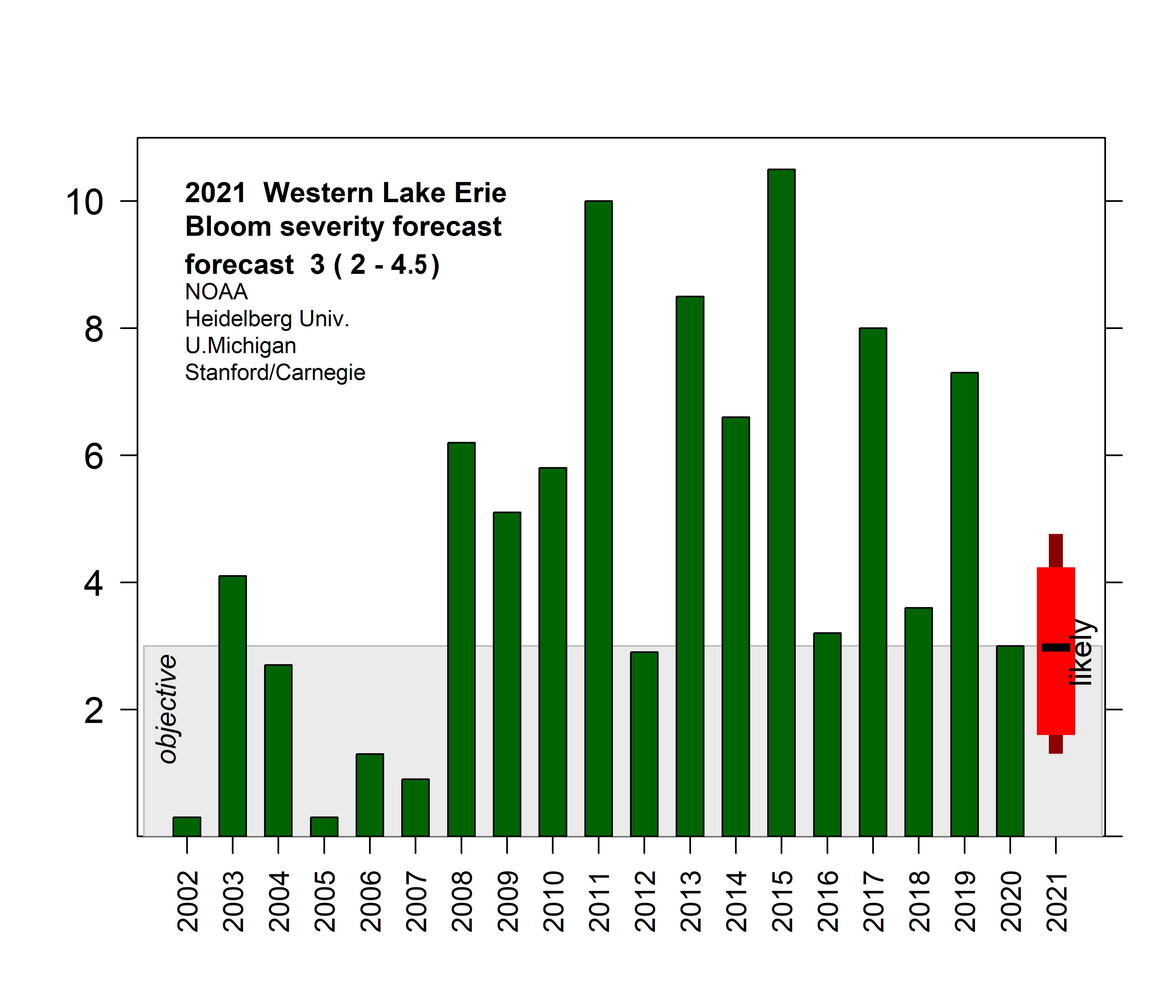
NOAA and its research partners are forecasting that western Lake Erie will experience a smaller-than-average harmful algal bloom this summer. A relatively dry spring will lead to a repeat of last year’s mild bloom — this is the first time in more than a dozen years that mild blooms have occurred in consecutive summers.
Lake Erie blooms consist of cyanobacteria, also called blue-green algae, capable of producing the liver toxin microcystin which poses a risk to human and wildlife health. Such blooms may result in higher costs for cities and local governments that need to treat drinking water; prevent people from enjoying fishing, swimming, boating, and visiting the shoreline; and harm the region’s vital summer tourism economy.

This year’s bloom is expected to measure 3, with a potential range of 2–4.5, out of 10 on the severity index — among the smaller blooms since 2011. The severity index is based on a bloom’s biomass — the amount of its harmful or toxic algae— over a sustained period. The largest blooms occurred in 2011, with a severity index of 10, and 2015, at 10.5. Last year’s bloom had a severity index of 3, while 2019 was 7.3. Blooms over 5 on the severity index have substantive impacts, with noticeable areas of scum on the lake, and have larger areas and duration of impact. Blooms over 7 are the particularly severe blooms, with extensive scum formation and extensive coverage affecting the lake.
The size of a bloom is not necessarily an indication of how toxic it is. The toxins in a large bloom may not be as concentrated as in a smaller bloom. NOAA is actively developing tools to detect and predict how toxic blooms will be.
The Lake Erie forecast is part of a NOAA Ecological Forecasting initiative that aims to deliver accurate, relevant, timely and reliable ecological forecasts directly to coastal resource managers, public health officials, and the public. In addition to the early season projections from NOAA and its partners, NOAA also issues HAB nowcasts/forecasts during the bloom season. These forecasts provide the current extent and 5-day outlooks of where the bloom will travel and what concentrations are likely to be seen, allowing local decision-makers to make informed management decisions.
The newly updated Lake Erie Harmful Algal Bloom Forecast website provides more accurate predictions and visualizations of where the bloom is located within the water column. This information is especially of interest to water treatment plant operators because intake structures are usually located below the surface, so the risk of toxins in their source water may be greater when these cells sink.
- Click here to subscribe to the Lake Erie HAB Forecast email updates.
- Click here to view the NOAA Lake Erie HAB Forecast 2021 Press Release.
